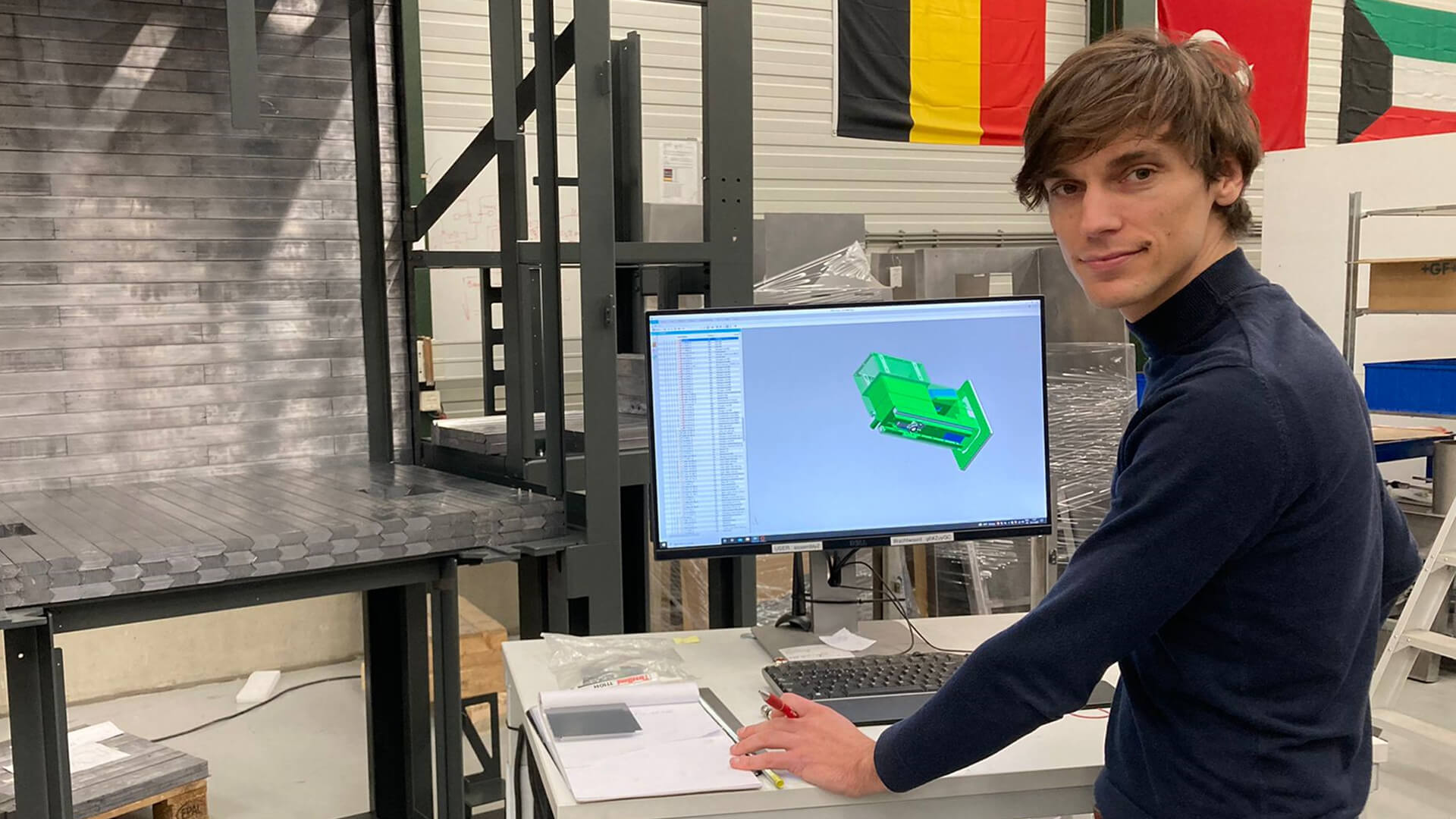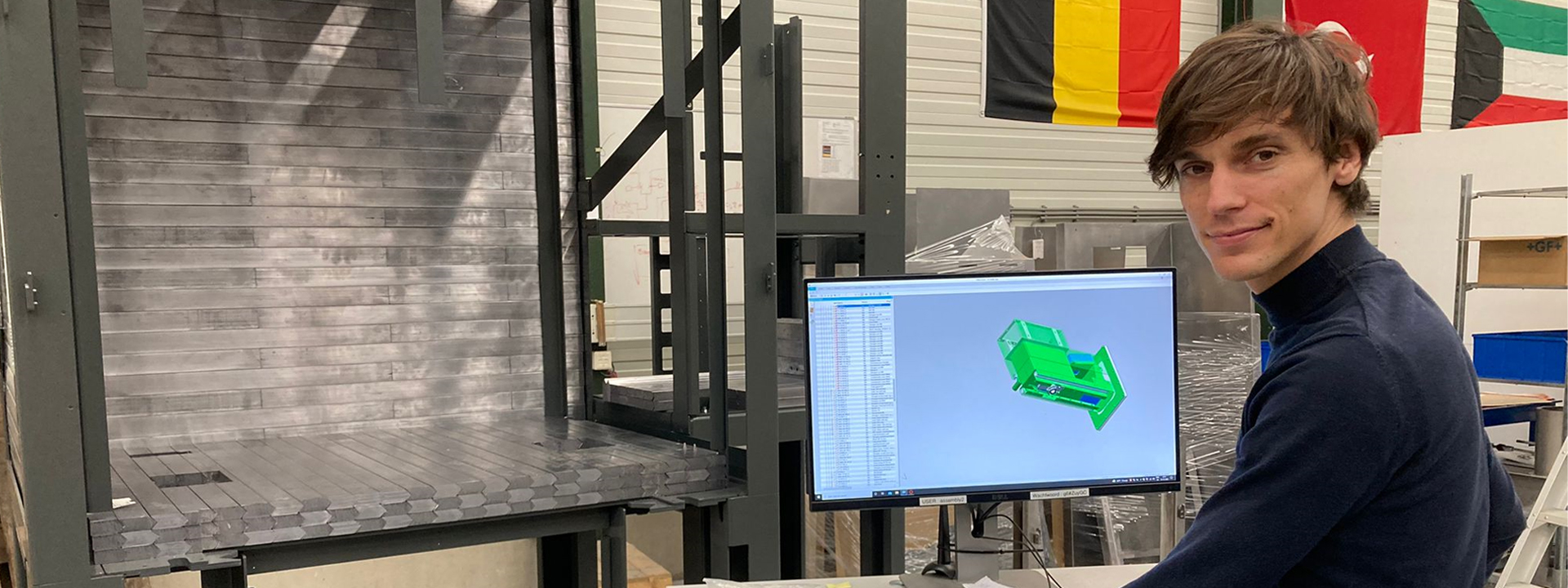A year and a half ago, Stefan applied to Von Gahlen. Stefan: “I had more than 10 years of experience in engineering as a freelancer and had just moved to this region. When I entered the production hall and saw what project they were working on at that moment, I was quite impressed. It also clicked right away with the other Engineers I spoke to.”
As a Lead Engineer, Stefan is responsible for all technical aspects of a project. This means he is involved in every step of the way. He writes design specifications, spars with engineers and checks their work. Stefan: “We are, of course, machine builders in a niche market. Our engineering department develops installations based on our product range, but also completely tailor-made. Both ways are equally appealing to me, because I always strive for the highest quality of the best fitting solution, based on customer specifications.”
The engineering process
At the start of every project, it is important to get a good image of the wishes and requirements of customers. Stefan: “Most of our clients have a medical background, not a technical one. That is why we don't just listen to their needs, but also think along with them. One of our sales engineers takes care of the technical translation in the first phase, the detailed translation is done by the engineering department.”
All requirements are provided to us by the customer in a User Requirement Specification (URS). Based on this URS, sales engineering makes an initial design and calculation. The drawings and 3d modelling for the design are made by a mechanical engineer. When the request is turned into a project, the sales department transfers it toward engineering. To ensure that everything that is agreed to is safeguarded in the process, every project is divided into stages. For this purpose, sales engineering and project management create a timeline and an estimate of the progress.
Stefan: “We compile an FDS (Functional Design Specification) based on the received data. This document is the complete technical translation of the user specs. Once the FDS is approved, it is the leading document for the project. As a result, the design is checked point by point against the FDS. This way we can be sure that we have included everything that was described.”
Extensive testing
The facility is built at the factory, exactly as it will be installed at the customer’s location. Stefan: “We work with several suppliers that we visit before the assembly at our factory starts. We then check if the specifications and quality of the parts is according to our standards. This way, we ensure that the parts are approved even before they arrive at our facility in Zevenaar.”
When the installation is ready Von Gahlen runs and completes a Factory Acceptance Test (FAT). Stefan: “When possible, customers are physically present during the process. We can also go through the test together via a video link. The test ensures that all functionality and parts are as described in the FDS and during the Design Qualification (DQ).”
When the installation meets all requirements, it is disassembled, coated and shipped to the customer. Stefan: “After the installation is built on site, we run a site acceptance test. This is a rerun of the tests we did at our production site. When everything works properly, the customer signs off an acceptance document and we provide a final document that contains the manual, CAD drawing, FDS, DQ, DQ drawings and electrical drawings. Only then, my work on the project is done.”

Contact us
Feel free to contact us if you would like to know more about our approach. When it comes to nuclear medicine, radiopharmaceutical packaging or lead precision: we develop, build and implement the shielding solutions you are looking for.

